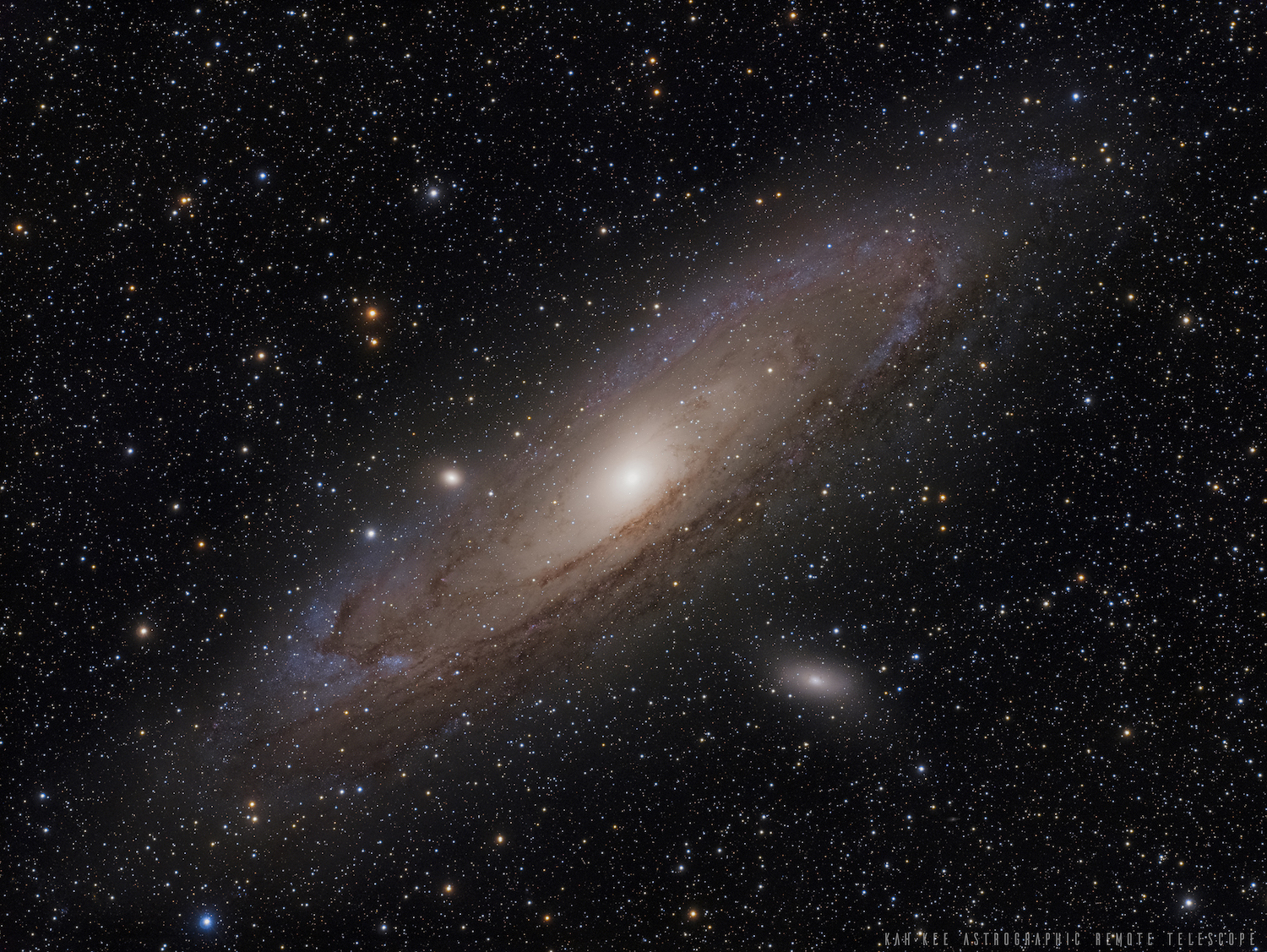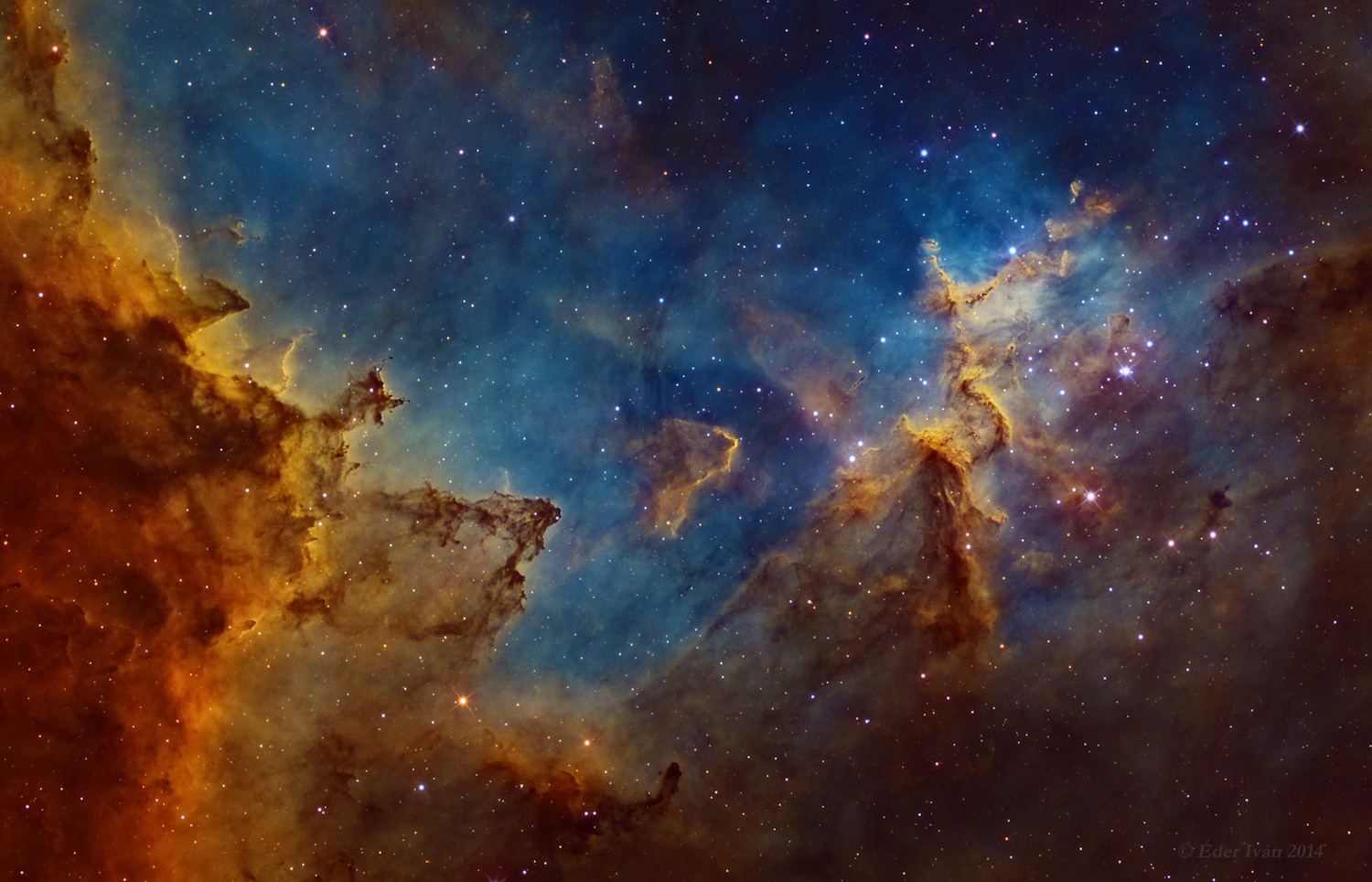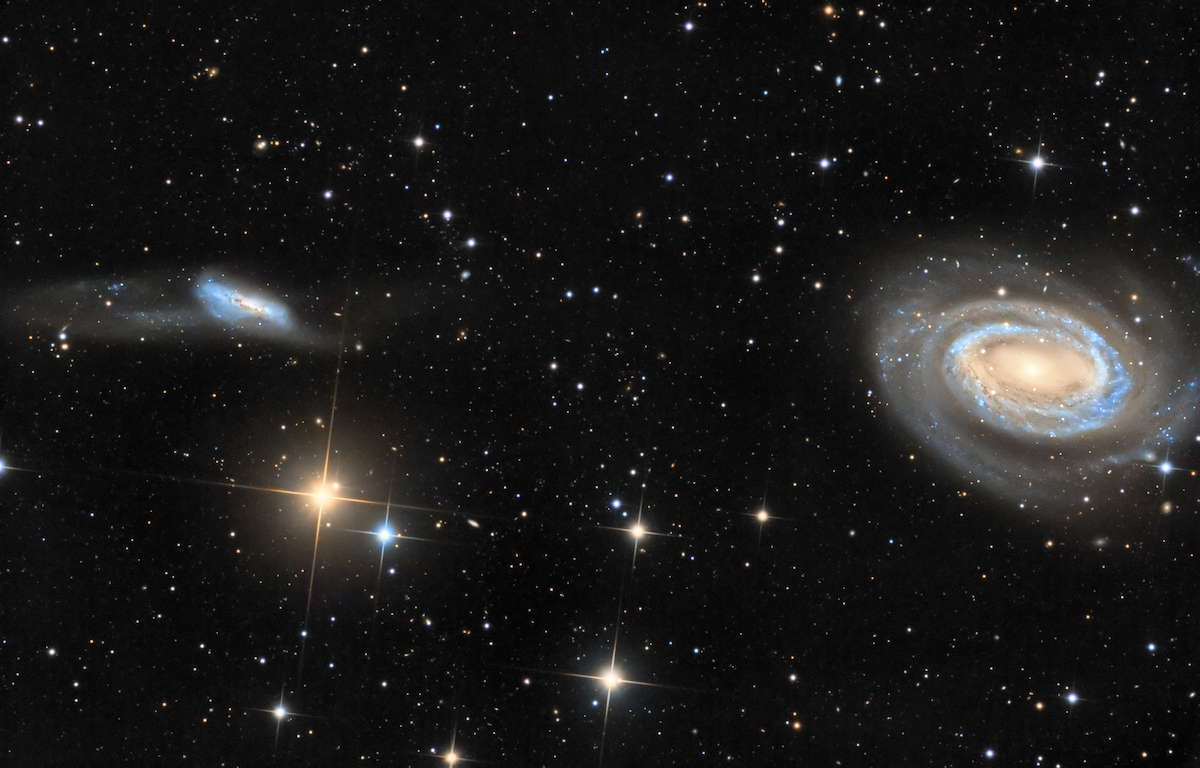Physics 172: Stellar Astronomy and Cosmology
Spring 2024

Classes:
Mon, Wed, Fri, 9:00 am - 9:50 am Small Hall, room 110
Description:
This course is aimed at those interested in learning about stellar astronomy and cosmology.
The course has three parts. First, we will discuss the basic
physics (gravity, the nature of light and other electromagnetic radiation)
and the major observational tools used by astronomers. The second part
will concentrate on the nature of stars, their evolution and their
life cycles, and will include detailed discussions of white dwarfs,
supernovae, neutron stars, and black holes. The last part will focus
on cosmology, the study of the Universe as a whole. You will learn the
current structure of the Universe, details about its past evolution
(and future prospects), and will learn about the extraordinary advances
in recent years -- ideas about what was occurring in the first nanoseconds after
the "Big Bang" that can be experimentally tested to high accuracy.
There will be two "interludes" in which material that isn't in the
book will be covered. In the first of these, the social and
philosophical implications of the remarkable discoveries of the early
20th century will be studied. At the beginning of the century, it was
thought that the Universe was static, included just our galaxy, and
had a size of about 10,000 light years. Just 20 years later, it was
clear that there are billions of galaxies, the size was billions of
light years, and that there appears to be a "beginning". In the
second interlude at the end of the course, different ideas about the
origin of the Universe will be discussed,
including the key question of the definition of scientific inquiry. Is
it science to discuss things that may not be directly testable? What
are the social, philosophical and religious implications of the whole
idea of a "beginning of a Universe"?
Readings for these interludes will be posted on Blackboard.
Prerequisites:
None, beyond an open and inquiring mind. This course is designed for students not planning on majoring in the sciences who are interested in learning about stars, galaxies, and the universe. Another course, PHYS 171, usually taught in the Fall, covers planetary and stellar astronomy. Both courses can be taken for credit, in either
order. A minimal amount of high-school mathematics will be used (basic algebra, trigonometry).
Text:
 Our textbook will be:
Our textbook will be:
Astronomy (2nd Edition)
Authors: A. Fraknoi, D. Morrison, S. Wolff
ISBN-13: 978-1-711470-57-3 (hardcover)
ISBN-13: 978-1-951693-50-3 (digital)
Publisher: OpenStax https://openstax.org
This textbook is available in electronic form free of charge. Simply go to the OpenStax site
and download a copy (a high resolution version is best). They will ask for a donation, but that is entirely optional.
It can also be purchased in hardcover or paperback
from OpenStax, the W&M bookstore, or major online retailers. If you have already purchased a copy of the first
edition (published in 2016), that is OK, you can use that as well.
Grading Scheme:
Numerical grades will be calculated based on EITHER:
Homework : 15%
Reaction papers (2) : 20%
Class Participation : 10%
In-class Tests (2) : 35%
Final Exam : 20%
OR
Homework : 15%
Reaction papers (2) : 20%
Class Participation : 10%
Final Exam : 55%
whichever is higher for each student. This way, poor performance on one or more of the
in-class tests can be made up with better performance on the exam... after all, what matters is what you know about astronomy by the end of the course.
Letter grades will be determined from the numerical grades using:
A 92-100% A- 88-92
B+ 84-88 B 80-84 B- 76-80
C+ 72-76 C 68-72 C- 64-68
D+ 60-64 D 55-60 D- 50-55
F < 50

Lectures:
Attendance is required. You should read the material in the textbook that will be covered each day before coming
to class. A complete (but tentative) class schedule is at the end of this syllabus. Slides will be
posted after each lecture on Blackboard, but the lectures will not be recorded. Class participation will be
monitored via in-class quizzes (see below).
Homework:
Most weeks there will be online homework assignments. You will need to purchase access to the online homework system, the
"ExpertTA" platform ($40).
The software will provide results on which questions were answered correctly and which were not. Hints and feedback
will be usually be provided for incorrect submissions. For most questions (i.e. except for true/false questions),
multiple attempts will be allowed. Points will be deducted for multiple submssions, and use of hints and feedback.
To sign up for ExpertTA, go to the PHYS 172 Student Registration Link:
http://goeta.link/USA48VA-6AEEAD-3C8. Please use your W&M username.
You can pay with a credit card, or purchase an access code from the W&M bookstore. There is a 14-day free trial
access option. An electronic version of the textbook is available from within ExpertTA.
Tests:
There will be two 50-minute long midterm tests (on Feb. 21 and April 1).
They will consist primarily of short-answer questions, but
may include simple calculations, sketches, graphs, or multiple-choice
questions. Make up tests will only be given for a valid excuse.
Hand calculators are allowed. An equation sheet will be provided.
Reaction Papers:
This
course satisfies the "COLL 200" requirement, and as such it has a
component that "reaches out" beyond the domain of the natural
sciences. This component will explore the social, philosophical and
religious implications of the scientific concepts and results
presented in the course. These will be based on supplementary readings
that will be posted during the semester, on two general topics, and will be discussed in two interludes.
For each topic you will write a
short "reaction paper" (3-5 pages). Detailed instructions for these
papers will be provided later.
Class Participation:
Most lectures will have an in-class quiz, based on the reading, which you will take using your cell phone,
laptop or tablet device. They will be multiple-choice, and you will get 50% credit simply for answering the quiz.
We will use Poll Everywhere ("PollEV") to answer each quiz. If you have not done so already for another course, please go to
https://polleverywhere.com/login to create a PollEv account using your W&M credentials.
You are allowed three absences from class during the term without any documentation or excuse (this includes
personal or medical absences). Any additional absences will require documentation from the Dean of Students. Varsity
athletes who will miss more than three classes should speak to me in the first week of classes. You must only take the quiz
if you are present in the classroom.
Final Exam:
The final exam will be cumulative, i.e. it will include material from the entire course, but will be similar in format to the in-class tests.
Important Dates:
Last day of Add/Drop: Fri. Feb. 2
First in-class Test: Wed. Feb. 21
Last day for Withdrawal: Mon. Mar. 25
Second in-class Test: Mon April 1
Last day of classes: Fri. May 3
Final Exam: Fri May 10, 9:00 am - noon.
Electronic Access:
This syllabus, supplemental materials, and homework
solutions will be posted on BlackBoard, accessible via myWM.
Homework assignments and readings will be announced in class and posted on Blackboard.
I will try to answer any email promptly, but please don't expect a reply after 9:00 pm.
Daily Schedule:
Schedule of readings and topics
Accesibility:
William & Mary accommodates students with disabilities in accordance
with federal laws and university policy. Any student who feels they
may need an accommodation based on the impact of a learning,
psychiatric, physical, or chronic health diagnosis should contact
Student Accessibility Services staff at 757-221-2512 or at sas@wm.edu
to determine if accommodations are warranted and to obtain an official
letter of accommodation. For more information, please see
www.wm.edu/sas.
http://physics.wm.edu/~armd/P172.html
Dept. of Physics
William and Mary
armd@jlab.org
last updated: Jan 15. 2024
 Our textbook will be:
Our textbook will be: 